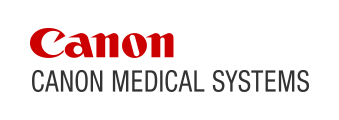Interventional Cardiology ImagingRite
Advanced Imaging Applications
- 3D Digital Angiography (3D DA) and 3D Digital Subtraction Angiography (3D DSA)
- 3D Roadmap (3DRM) and Multi-Modality Fusion (MMF)
- Alpha CT imaging – Cone Beam CT
- Needle Guidance
- Heart and coronary Analysis Software
- Left Atrium Auto Segmentation Software

3D DA of the aorta provides unique views of pathology

3D DA of aortic root for TAVR
Alpha CT Vessel
3D DSA

3D DA provides the ability to display complex anatomy

Double injection of aorta and pulmonary artery

3DRM using pulmonary artery 3D DA spin

3D RM of Pulmonary artery used for stent placement
Volume Navigation
MMF

MMF: Aortic valve repair

MMF: CT fusion of aortic arch
Alphenix Left Atrial (LA) Auto Segmentation Feature

Multi-Modality CT Fusion

Screen shot of LA auto segmentation on AWS
Alpha CT
Alphenix includes several processing capabilities that can be used with Alpha CT:
 MPR views from a Alpha CT of lungs shows pneumothorax post biopsy
MPR views from a Alpha CT of lungs shows pneumothorax post biopsy
• Metal Artifact Reduction (MAR)*
• Stent Imaging Filter
• Device Fusion
 Device Fusion technique pre and post stent placement
Device Fusion technique pre and post stent placement
Vitrea Advanced Visualization Software
Vital post-processing tools include CT Cardiac Analysis, CT Mitral Valve Analysis, CT Vascular Aorta, LAA Analysis, CT TAVR Planning, and CT electrophysiology planning.
PIE Medical Software*
• 3mensio Structural Heart
3mensio Structural Heart facilitates pre-operative planning of aortic valve procedures, mitral valve, coronary, procedures and left arterial appendage closures.• CAAS A-Valve™
CAAS A-Valve can assist physicians during or in preparation of valve replacements as TAVR (or TAVI) procedures.*: Designed and manufactured by Pie Medical Imaging

CTA TAVR planning software

3mensio Structural Heart/Mitral Valve SW

3mensio aortic valve software

3mensio analysis of femoral arteries

Example of CAAS S-Valve software

Fluoro record of TAVR procedure
PIE Medical Stent Enhancer
PIE Medical 3D Quantitative Coronary Analysis (3D QCA) Software

Stent enhancer software shows detail in edges of stent

3D QCA software showing 3D model of vessels
Conventional Imaging in Interventional Cardiology
2D Coronary Rotation
Imaging with 2D coronary rotation, perform a single injection and let the C-arm rotate to capture key diagnostic views of coronary arteries. Using this technology enables clinicians to obtain optimum image quality at reduced dose as compared to traditional multi-acquisition imaging to acquire similar views. Automated sequential rotational image acquisition aids clinicians in prioritizing safety and efficiency. Rotational coronary angiography depicting the stenosis in the vessel at various angles obtained during the rotation of the C-arm.
Rotational coronary angiography depicting the stenosis in the vessel at various angles obtained during the rotation of the C-arm.
Dynamic Trace (DT)
 Dynamic Trace gives clinicians the ability to perform a digital acquisition while panning the table following the flow of contrast. This image is an example of panning from hip to foot.
Dynamic Trace gives clinicians the ability to perform a digital acquisition while panning the table following the flow of contrast. This image is an example of panning from hip to foot.
 An example of Dynamic Trace while panning the table from hip to knee.
An example of Dynamic Trace while panning the table from hip to knee.
DoseRite
Spot Fluoroscopy
 Spot fluoroscopy ROI can be easily sized and positioned anywhere in the FOV and provides anatomical landmarks visible in the LIH.
Spot fluoroscopy ROI can be easily sized and positioned anywhere in the FOV and provides anatomical landmarks visible in the LIH.
Live Digital Zoom
Illuvis
AIP enhances visibility by increasing image contrast, enhancing small object detail and reducing halation from lung fields. SNRF reduces total noise power by up to 90 percent while maintaining sharp spatial and temporal resolution.1 In concert, these unique technologies combine to provide image quality improvements greater than 200 percent.2 This has resulted in demonstrated reduction to both patient and staff radiation dose levels by more than 50 percent with utilization of lower frame rates and more fluoroscopy as compared to higher dose digital “cine” acquisitions.3
Dose Rates

Applying the 1.2 zoom mode to the 8" FOV of the left coronary artery increases the display size by approximately 20%. The increase in display size is equivalent to one magnification mode.

DTS provides an estimation of peak skin dose available on cardiovascular/neurovascular procedures
Fluoro Record
 Example of available fluoro records with Alphenix.
Example of available fluoro records with Alphenix.
DTS
1. Nishiki, M, Shiraishi, K, Sakaguchi, T, Nambu, K (2008). Method for reducing noise in X-ray images by averaging pixels based on the normalized difference with the relevant pixel. Radiol Phys Technol, 1, 2:188-95.
2. Nagesh, S, Kuhls-Gilcrist, A, Ionita, C, Bednarek, D, Rudin S (2015). Improved visualization of neurovascular interventional treatment devices by processing of images. Accepted for publication. IEEE MIC.
3. Sawdy, J et al (2011). Use of a dose-dependent follow-up protocol and mechanisms to reduce patients and staff radiation exposure in congenital and structure interventions. Cath and Card Interv, 78, 136-142.






